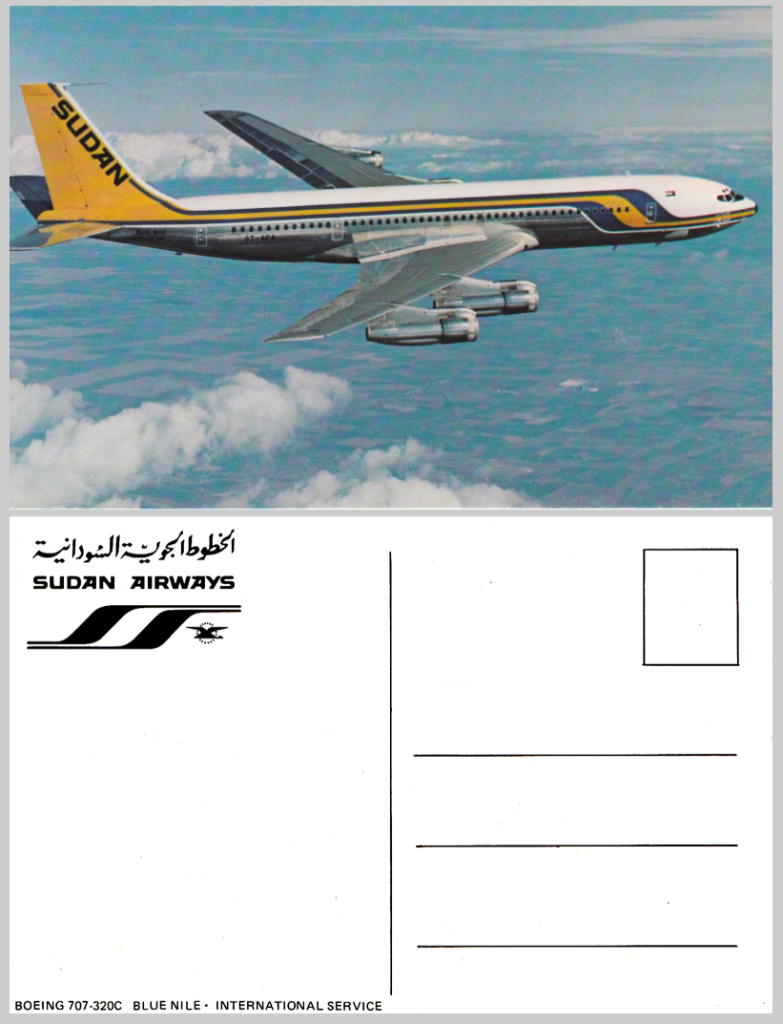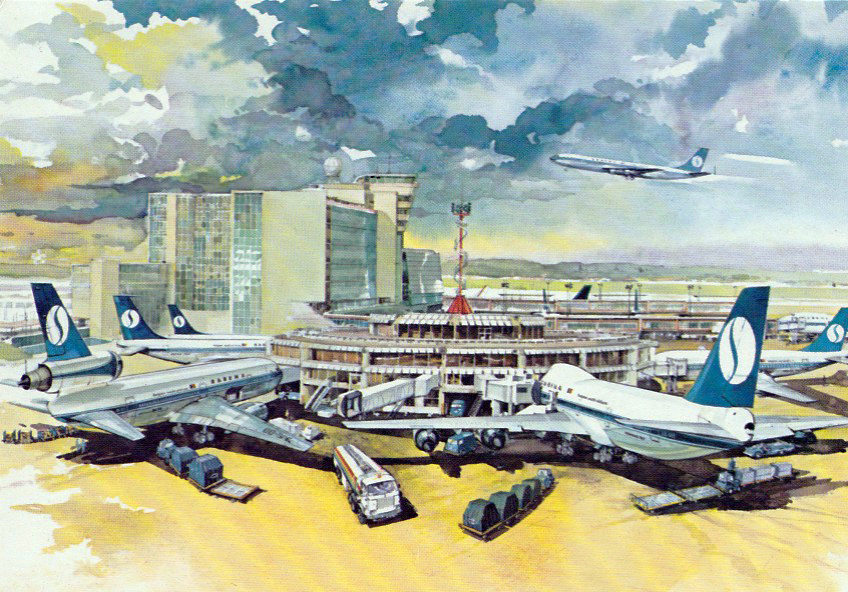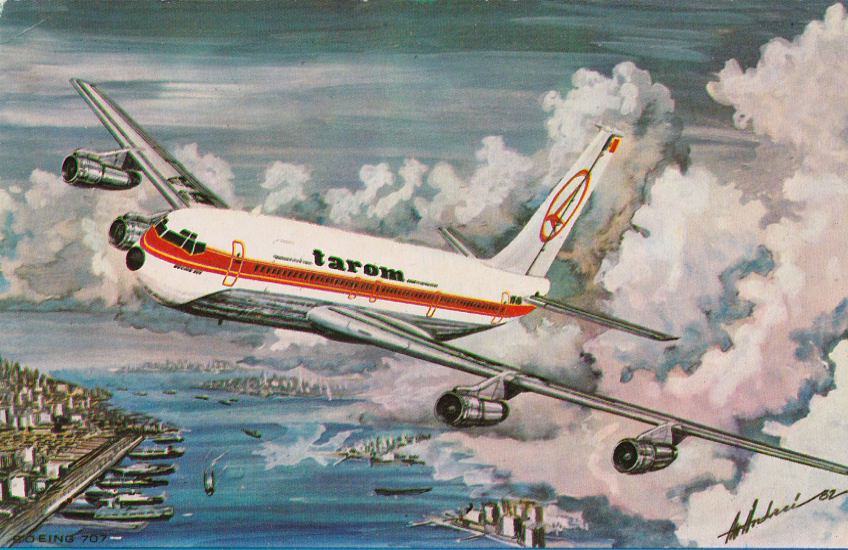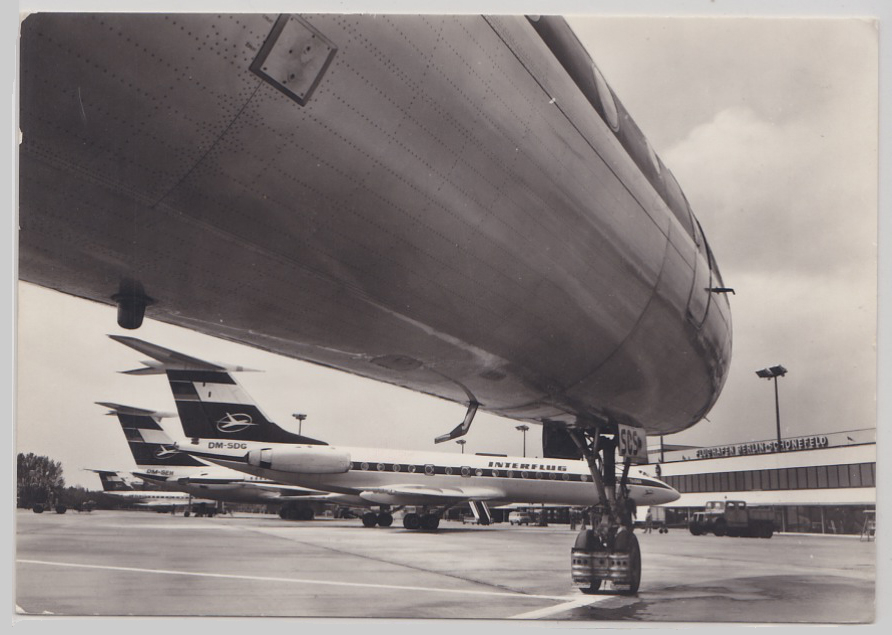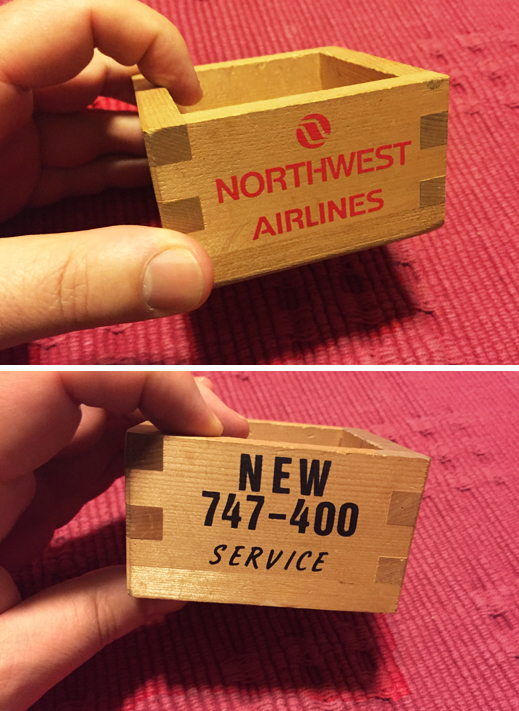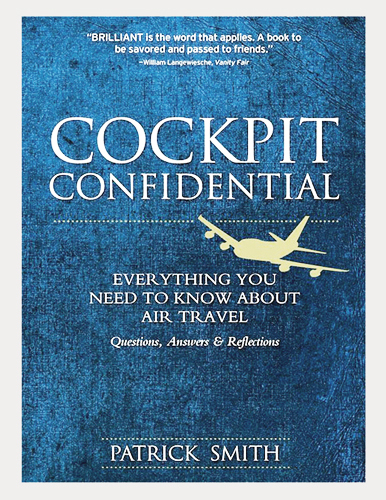Homage to the Boarding Pass Wallet
The Weird and Wonderful World of Airline Collectibles.
November 20, 2015
YOU KNOW WHAT I MISS? Airline ticket wallets. Once upon a time airline tickets were issued by hand, and were often several pages thick, while boarding passes came in the form of cardstock keepsakes. When you checked in at the airport, the agent would arrange this paperwork in a paper or cardboard wallet — sometimes they called it a “ticket jacket” — emblazoned with the carrier’s logo and colors, and hand it back to you. Have a nice flight, sir. It was a small but classy touch, and a helpful way of organizing your documents. Today’s electronically issued tickets are mere receipts that can be folded into a pocket, and the boarding pass has become a similarly flimsy scrap, rendering the jackets all but obsolete. I don’t imagine this saves much money, since they couldn’t cost more than a penny each to manufacture, though if nothing else I guess it saves a few trees.
When I was a kid I had a pretty good collection of ticket jackets from airlines around the world. I had a big timetable collection too, and those are another thing I miss. Timetables. Three or four times a year airlines would publish thick booklets containing their entire network schedule — arrival times, departure times, aircraft types, etc. — plus a wealth of other information. There were seating diagrams, addresses and contact info, and, my favorite, the fold-out route map. They were useful to frequent flyers and they made neat collectibles.
For the most part timetables have been relegated to virtual status on airline websites. Hard copy versions haven’t totally disappeared, but you need to look overseas to find the few that are still out there. I’m not sure who still prints them. The newest one I own is about ten years old. Curiously, looking at the various carriers’ current online versions is something of a sentimental journey, as the basic format has hardly changed. Several of the major carriers’ online timetables are laid out exactly like the printed versions 25 years ago, with the identical fonts and typefaces!
Airline collectibles. I wonder sometimes how much my old archive would be worth, if only it still existed. Inside a gray metal footlocker once resided a good fifty pounds of airline memorabilia that my friends and I had stockpiled during our weekend forays to Logan Airport in the mid and late 1970s. We’d rummage through kiosks and weasel our way onto parked jetliners. Virtually anything wearing an airline logo was snagged and hoarded: timetables, booklets, luggage stickers and tags, silverware, pins, inflight magazines, barf bags, playing cards.
We’d also write to airline offices the world over. “Dear South African Airways, could you please send us some timetables, pictures of your aircraft or other items for our collection.” Amazingly effective this was. A few weeks later a fat manila packet would arrive jammed with posters, pictures, promotional brochures, you name it.
All gone. Gone because, for reasons that I can’t today fathom, I threw it all away.
I was 18 or 19 when I did it. The locker, a gray aluminum chest the size of a large suitcase, still sits in the attic of my parents’ house in Revere, Massachusetts. It’s covered with luggage stickers from Braniff, Eastern, Piedmont and North Central. It goes BOOONG! when you bang on it. Because it’s empty. The bottomless echo of a teenager making another bad decision.
Among the few things I hung onto are a small handful of timetables, and a sizable library of airliner postcards, which I still actively curate. Their portability, if nothing else, inspired me to save them. Postcards, yes: years ago airlines would publish and distributed postcards showcasing photographs or drawings of their aircraft. Photo on the front; blank space for writing and postage stamp square on the back. I’ve got about 500 in all, from Aeroflot to Air Zimbabwe, some of which, according to eBay and the people who sell and trade such things, are worth $20 or $30 apiece.
Here are two examples, front and back. The LOT card, showing a Tupolev Tu-134, seems to be celebrating the airline’s 60th anniversary. It says “Blue Nile International Service” along the back of the Sudan Airways 707:
I’ve got an Avianca card of a 747 on its first trip to Medellin, Colombia, marked “Historica fotograica,” and a Laker Airways DC-10 that includes a little balloon picture Sir Freddie himself, his smile beaming skyward and his autograph reproduced across the bottom. And look at this one. It’s a watercolor painting of the Brussels Airport, put out by the old Belgian carrier Sabena. I’d date it to the mid-1970s judging from the planes:
Several of my cards are renderings like that one, done in watercolor, oil or acrylics. One of them is an Aeroflot Tu-114 done in charcoal and pencil, the AEROFLOT typeface straight out of 1957, the effect all Sputnik/Gary Powers/Oswald. Where did such wonderful things come from? Who designed them? Were they commissioned? Was somebody actually paid for this work?
Some airlines were astoundingly prolific with their postcards. Lufthansa produced hundreds of them. The U.S. majors did too. My favorites are the 1960s and 1970s-era cards: the 707s, DC-8s, Caravelles and 747SPs; the old Soviet Tupolevs and Ilyushins. I especially savor the tarmac shots where the jets are surrounded by activity: workers and tug-tractors and baggage vehicles all stirring about. I love the action and drama these scenes suggest, all of the logistical and human effort that goes into getting a plane off the ground. They’re vastly more interesting than the dime-a-dozen shots of a plane aloft, nose-to-tail against a sunset or a bank of clouds.
Artistically speaking, the Eastern Europeans seem to have put the most thinking into their cards. My collections spans dozens of airlines across six continents, but it’s those from the old Soviet Bloc that are the most nuanced and creatively designed. Maybe this was a minor form of Cold War propaganda, the Eastern carriers outdoing their Western rivals in one of the only ways they knew how. Check out these examples from Romanian carrier Tarom, and the former East German airline Interflug; the Tupolev’s underbelly in black-and-white, when it didn’t need to be:
You’ll find very few airline pilots who collect such things, or even know they exist. Most pilots aren’t into airlines per se and know relatively little about them. But to me these picture cards are poignant historical markers. Not just the airline industry’s history, but my own. They are like slices of my adolescence. They take me back to junior high school, to those critical formative years of my airline nerdity. If my apartment ever caught fire and I was allowed to save one thing, my box of postcards might be that thing.
A handful of airlines still do postcards. I was excited, last spring, taking a TAP (Air Portugal) flight from Heathrow to Lisbon, to discover a display of cards for the taking, in a plastic holster mounted on one of the cabin bulkheads, each with a picture of an Airbus A320. I grabbed one. Actually I grabbed two.
Here’s an online database of airline postcards both old and new, some of which I own.
Aside from the postcards I’ve been slowly rebuilding my memorabilia collection. I’ve got some menus, a few timetables that I bought online (including a few that I’d owned previously, before the great purge of 1985 or whenever it was), amenities kits and silverware and luggage tags. Most of it is newer material that for me lacks the meaning and sentimental associations of my earlier and collection, but this time I promise not to throw it out.
I also have this. It’s a wooden sake cup from the inaugural flight of the Boeing 747-400:
Northwest Airlines, some of you might recall, was the launch customer for the 747-400, back in 1989. That spring, they had been using the jet on domestic “proving runs” mainly between Minneapolis and Phoenix. Finally on June 1st, they inaugurated international service. The first departure was flight NW 47, from JFK to Narita. My friend Ben and I were passengers on that flight. It was the day after my 23rd birthday. I still have my commemorative sake cup. The 747-400 is no longer the preeminent or the most popular long-haul aircraft. That would be its slightly smaller brother, the 777-300. But there are still more than five-hundred -400s in service. And I had a seat on the very first one.
Which brings us to the strange object you see below. This was sent to me about five years ago by Peter Hughes, the bassist for the Mountain Goats and an Ask the Pilot aficionado, who’d found it at a flea market. It is what it appears to be: a small plastic doll, about three inches tall, encased in a transparent shell, like a miniature trophy case, adorned with ’60s-era airline logos, including those of BOAC, Pan Am, and the beautiful JAL crane (still in use, miracle of miracles). It says “Cragstan” across the bottom, which I take to be the name of the company that produced the thing. The doll is supposed to be a stewardess, possibly? I don’t know, but I dig owning it:
Help support the author’s postcard habit by ordering a copy of his book
Related Stories:
AIR TRAVEL IN ART, MUSIC & FILM
PLANES, PRANKS AND PRAISE: ODE TO AN AIRPORT
MY STRANGE HISTORY OF AIRLINES REAL AND IMAGINED




